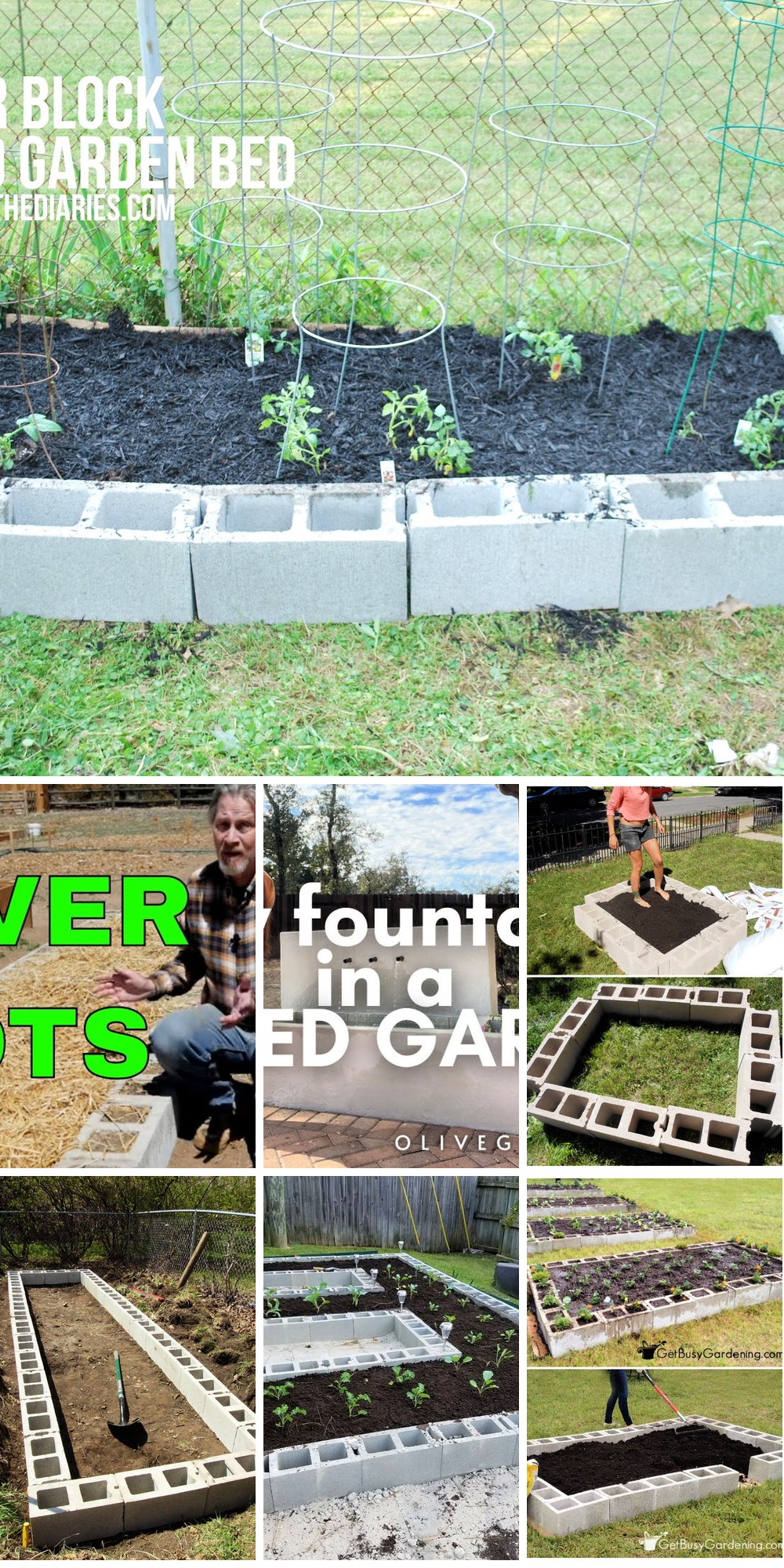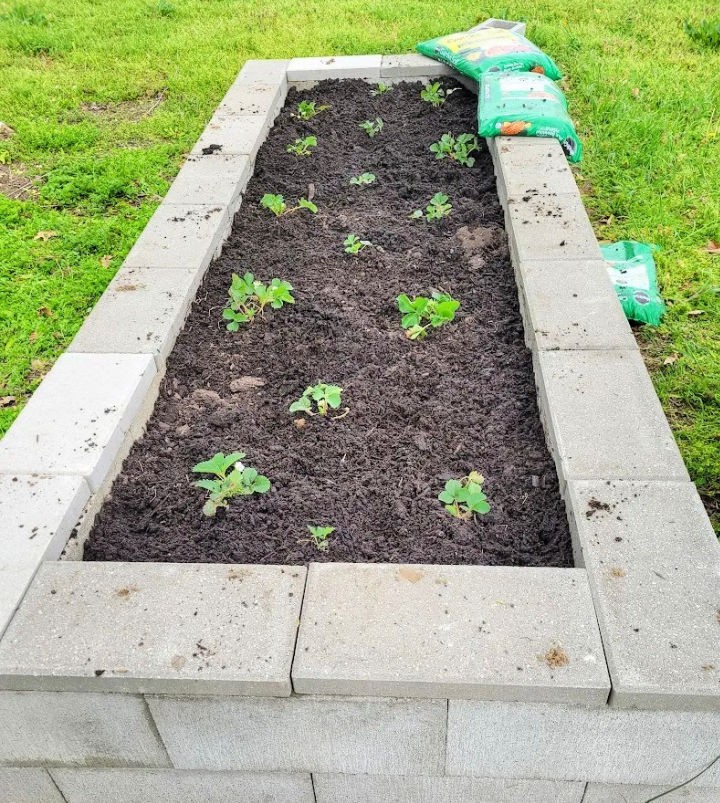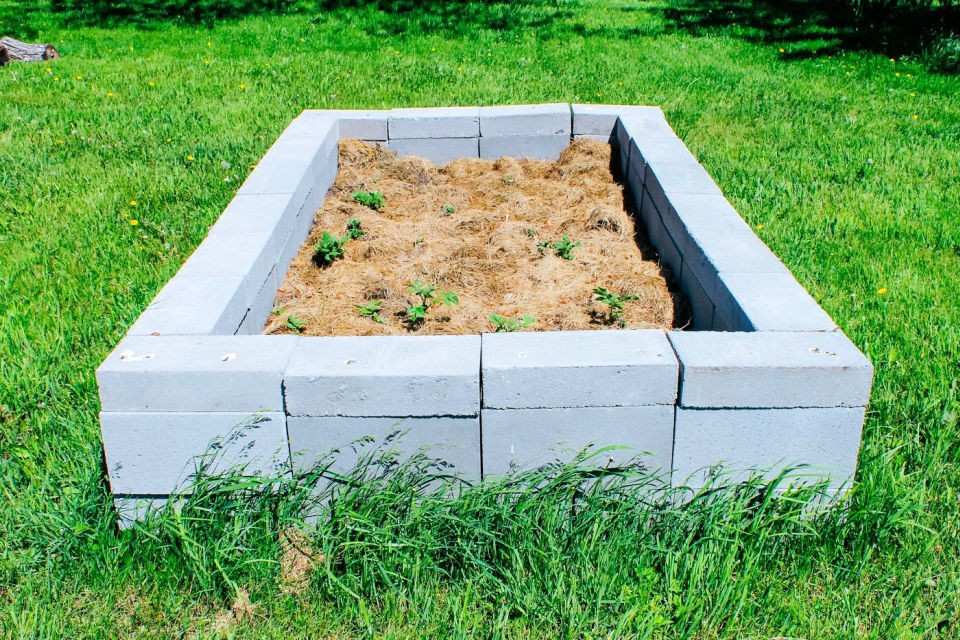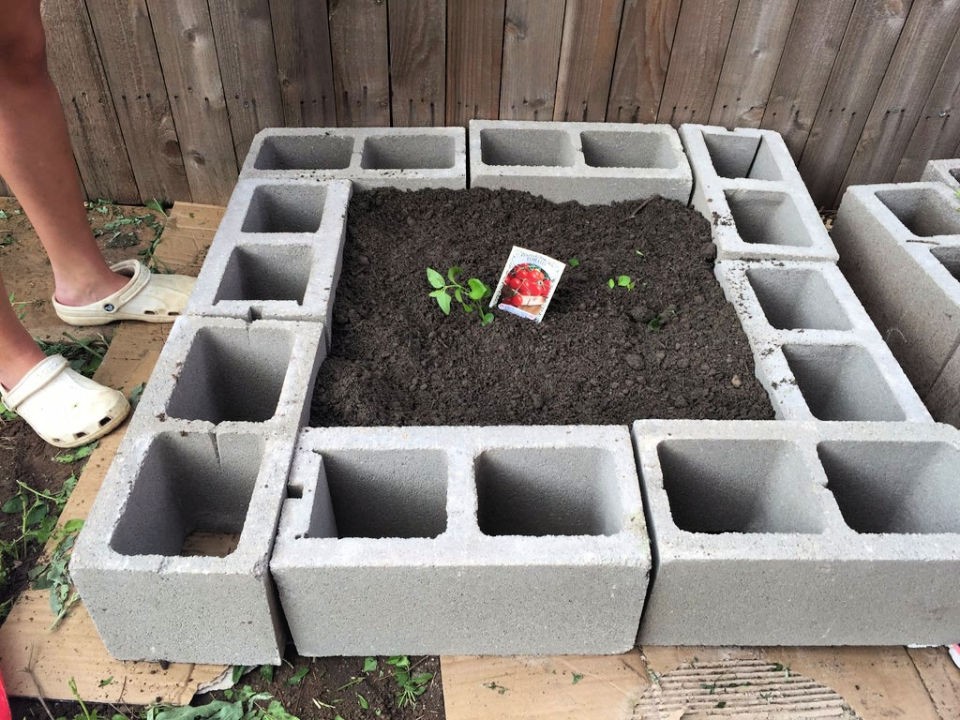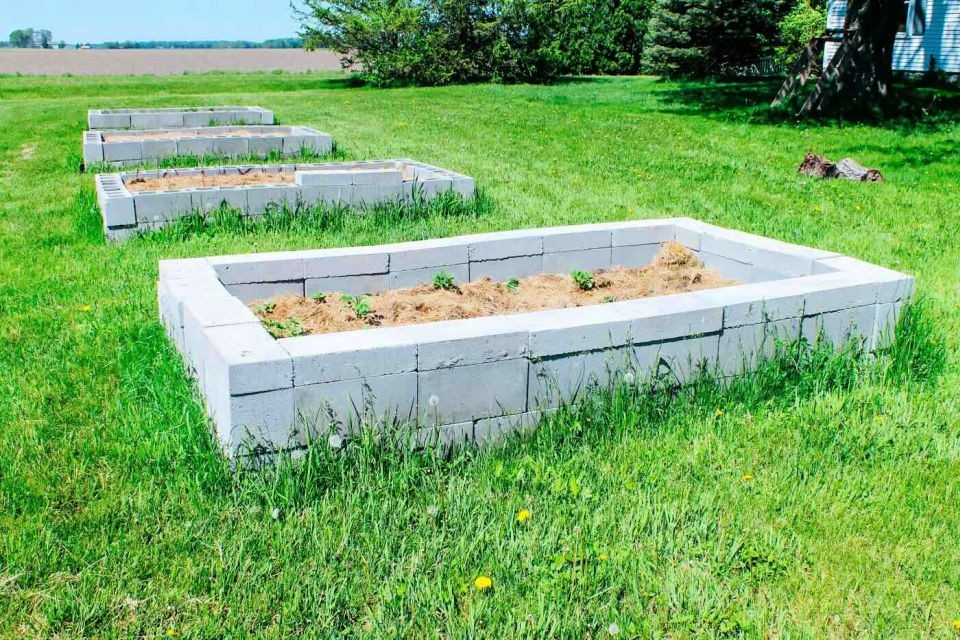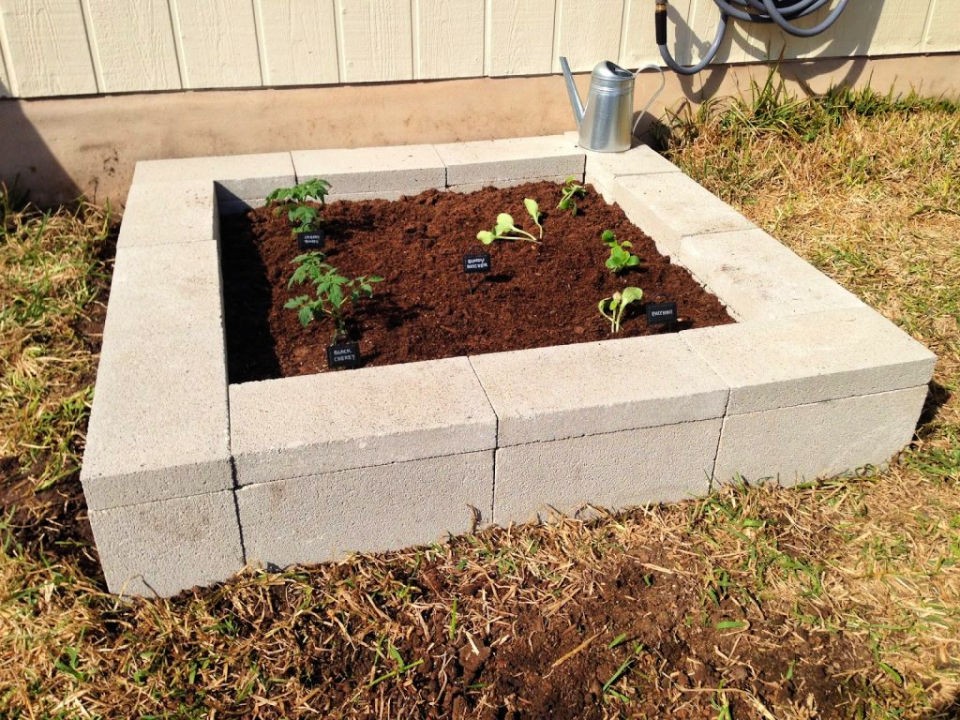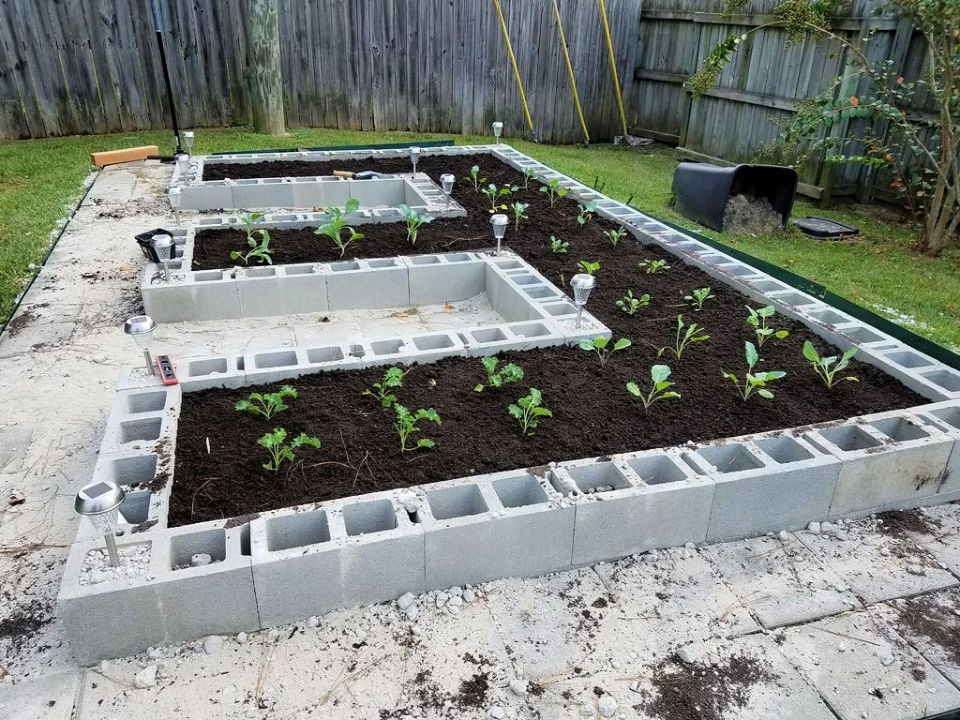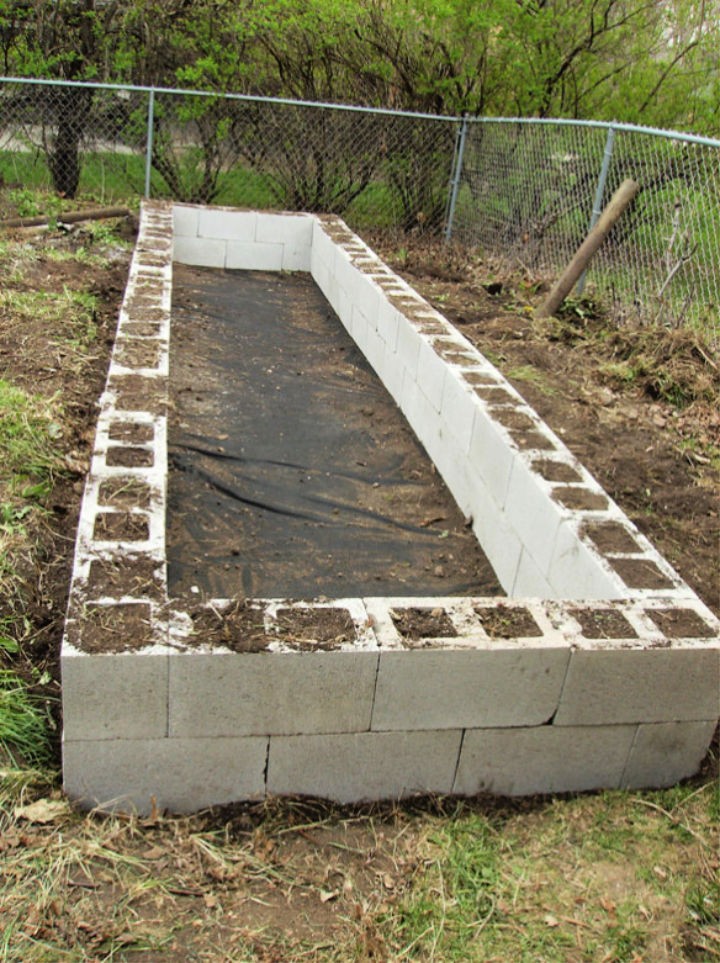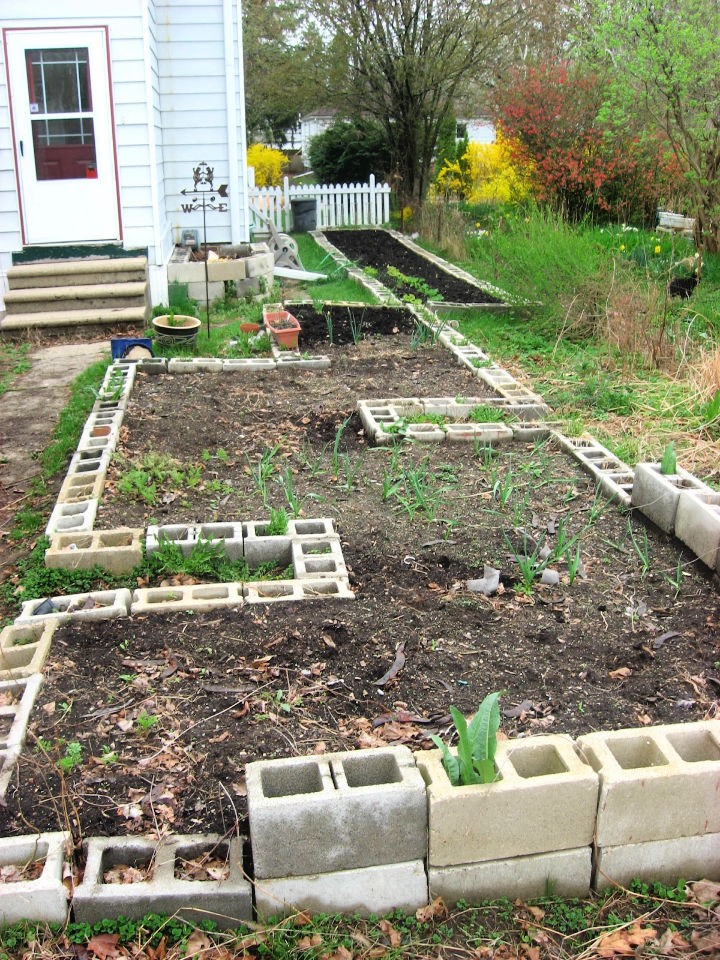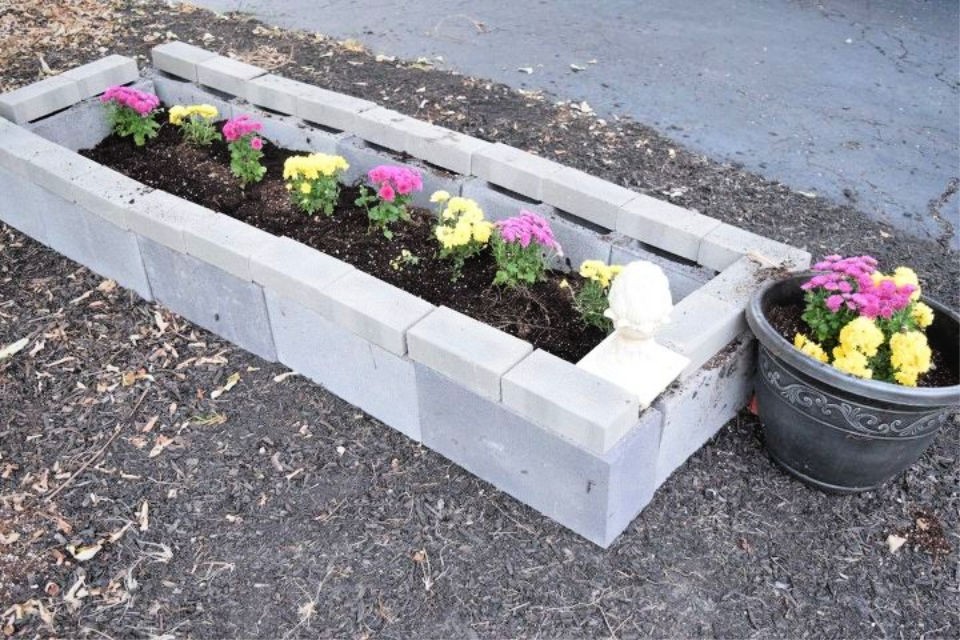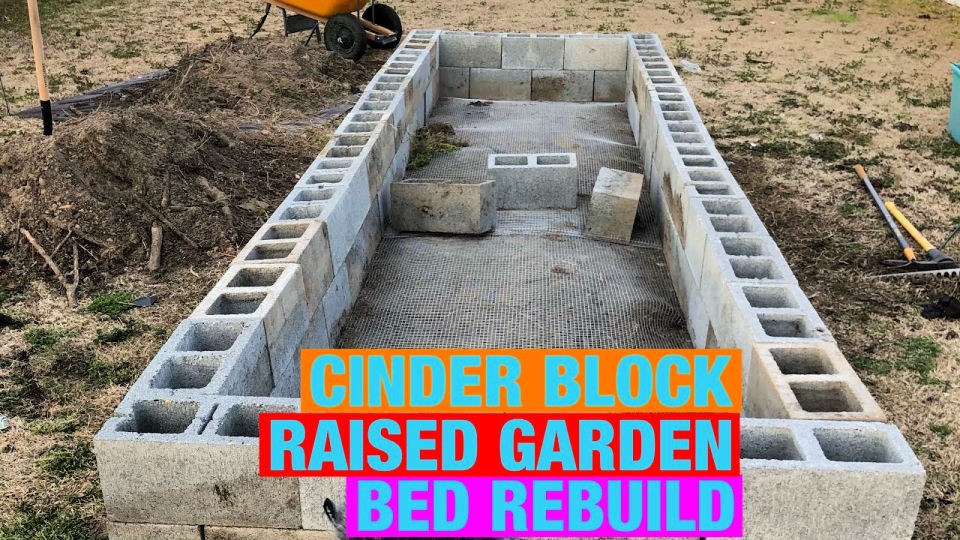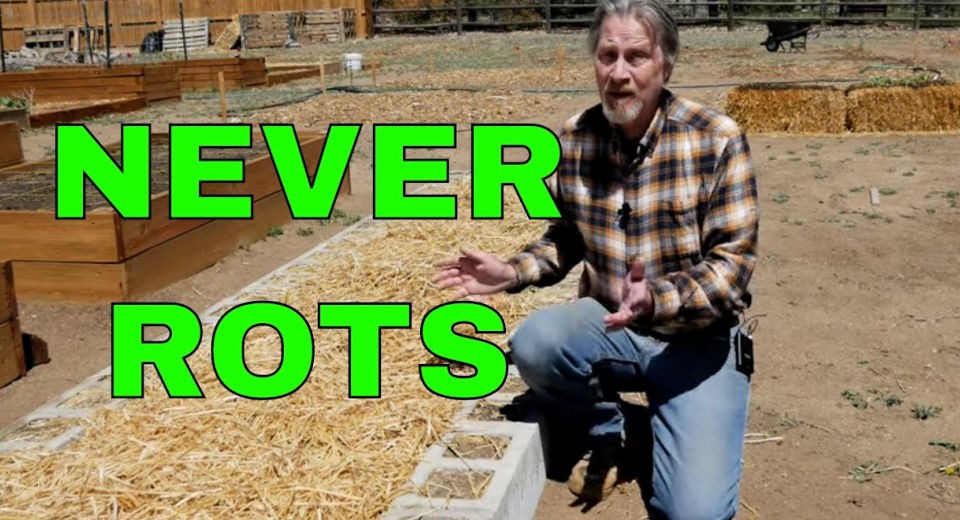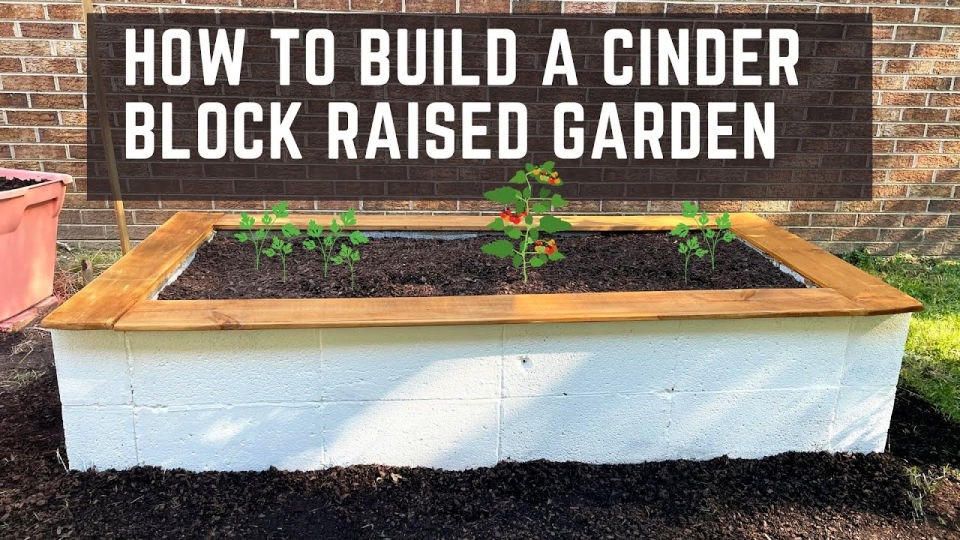Creating a cinder block raised bed is an innovative and budget-friendly way to cultivate your plants and vegetables. By leveraging these 20 DIY ideas, you can enjoy excellent drainage, extended growing seasons, and enhanced pest control – all while elevating the visual appeal of your garden. The modern aesthetic provided by cinder blocks seamlessly blends functionality with style.In this comprehensive guide, we’ll take you through the process of building a cinder block raised bed from start to finish. This includes sourcing the necessary materials and tools, planning the layout, preparing the site, assembling the structure, and performing ongoing maintenance. Whether you’re seeking to enhance your garden’s beauty or boost its yield, this step-by-step guide will empower you to achieve your objectives.
Why Choose Cinder Block Raised Beds?
When it comes to gardening projects, choosing cinder block raised beds is a decision that offers numerous benefits. One of the primary advantages is their exceptional durability, allowing them to withstand harsh weather conditions and resist rotting like wood. This longevity also translates to cost-effectiveness, as you’ll spend less on replacements over time.Another perk is the versatility of cinder blocks, which can be easily customized to fit your space and needs. You have the freedom to paint or leave them unpainted for a more industrial look, giving you aesthetic flexibility. Additionally, constructing raised beds with cinder blocks doesn’t require special tools or advanced DIY skills, making it an accessible option for many gardeners.Cinder block raised beds also offer pest resistance, as their solid structure helps deter unwanted visitors from damaging your plants. Furthermore, the improved drainage provided by raised beds is enhanced by the natural holes in cinder blocks, ensuring that your plants receive the right amount of water.Finally, the hollows in cinder blocks can be used to create additional planting spaces, perfect for herbs or flowers. This feature allows you to maximize your gardening area and get the most out of your space.In summary, investing in cinder block raised beds is a decision that will provide a cost-effective, durable, and versatile solution for your gardening needs. Whether you’re a novice or an experienced gardener, these beds can elevate your experience and help you achieve success in your garden.
Make a Cinder Block Raised Bed
Constructing a raised bed using cinder blocks offers a robust and budget-friendly solution in lieu of traditional wood-based options. This comprehensive guide will lead you step-by-step through the creation of a stable, level, and aesthetically pleasing cinder block raised bed for your garden, ensuring a sturdy foundation for your plants to thrive.
Materials and Tools Needed
When building a raised bed, you’ll need to gather the right tools and materials. Start by collecting cinder blocks, also known as concrete blocks, which will provide a sturdy foundation for your bed. Next, grab a measuring tape to ensure your bed is the desired size. For precision, use stakes and string to mark out the perimeter of your bed. To get an accurate sense of your bed’s levelness, employ a line level. A shovel will come in handy for digging the trench where your cinder blocks will sit. You can also utilize a wheelbarrow to haul away excess soil. For added reinforcement, consider using rebar, which is particularly useful for higher beds. Finally, don’t forget mulch or straw, both of which can help retain moisture and suppress weeds in your bed.
Planning Your Raised Bed
When selecting a location for your garden bed, prioritize areas that receive at least six hours of direct sunlight daily. Additionally, consider sites that offer easy access to water sources and maintenance paths. To define the perimeter of your bed, measure the area and mark it out with stakes and string, ensuring the bed is level and parallel to any surrounding features. Once you’ve established the boundaries, consider the size and shape of your garden bed. Standard cinder blocks are typically 16 inches long, 8 inches wide, and 8 inches deep, leaving open centers that can be utilized for additional planting spaces.
Preparing the Ground
To get started, it’s essential to prepare a level foundation for your bed frame. Begin by inspecting the area where you’ll be building the structure. Remove any excess soil from high points and fill in any low-lying areas to create a smooth, even surface. Once you’ve achieved a satisfactory level of flatness, proceed to place the initial cinder blocks along one edge of the defined space. Pay particular attention to the first few blocks as they set the tone for the entire structure’s stability and accuracy – ensure they’re both level and secure in their positions.
Assembling the Bed
As you construct your structure, it’s crucial to maintain precision and attention to detail. Begin by carefully placing each cinder block, ensuring its levelness and alignment with the previous ones. Use a rubber mallet to gently nudge any blocks that need adjustment. As you proceed, double-check the height of each new addition against its neighbors using a trusty level. This will not only guarantee structural integrity but also create a visually appealing arrangement. When laying the perimeter blocks, make sure the final shape is either square or rectangular, and don’t hesitate to make any necessary adjustments to achieve perfection.
Filling Your Raised Bed
When it comes to setting up your container garden, there are a few key steps you’ll want to take to ensure success. The first step is to fill the interior of the container with high-quality garden soil, being mindful not to disrupt the alignment of the cinder blocks in the process. This will provide a solid foundation for your plants to grow in.If desired, you can also take the opportunity to fill the open centers of the cinder blocks with soil, creating additional spaces for planting. This can be especially useful if you’re looking to maximize your container’s growing potential.Finally, consider adding a layer of mulch or straw to the top of the soil to prevent weed growth and soil erosion. This will not only help keep your garden looking its best, but also make maintenance easier in the long run.
Optional Steps for Taller Beds
When building beds with multiple layers of blocks, it’s crucial to prioritize stability. For structures that exceed a single layer, stagger the joints between blocks to create a strong foundation. This technique is particularly important for beds featuring two or more layers, where rebar can provide sufficient support. However, when constructing taller beds comprising three or more layers, mortar becomes an essential component to secure the blocks in place and prevent settling issues. To simplify the process, consider building higher levels partially, allowing for easy soil filling before completing the construction as the soil settles. This approach enables a sturdy foundation while minimizing the risk of structural compromise.
Maintenance and Planting
Once your garden structure is complete, it’s time to start planting. One of the most appealing aspects of using cinder blocks as a foundation is that they provide natural growing spaces within their open holes. These mini-garden pockets are perfect for cultivating herbs, flowers, or other small plants, offering a unique opportunity to add visual interest and fragrance to your garden alongside the main bed area.
Video Tutorial
To get started with building a cinder block raised bed, we recommend watching Gardener Scott’s step-by-step video tutorial on YouTube. This visual guide complements the written instructions provided here, offering a comprehensive understanding of the process. By combining the two, you’ll gain valuable insights into each stage of construction and be well-prepared to tackle this rewarding project. A cinder block raised bed is not only a functional addition to your garden but also a durable and aesthetically pleasing feature that can significantly enhance its productivity and overall appearance.
FAQs on DIY Cinder Block Raised Beds
For the enthusiastic gardener, constructing a DIY cinder block raised bed can be a thrilling endeavor. To ensure a successful and enjoyable experience, consider addressing the following frequently asked questions before commencing your project.
Why should I choose cinder blocks for my raised bed?
One of the most practical and budget-friendly options for garden construction is cinder blocks. These versatile building materials offer a range of benefits that make them an attractive choice for many gardeners. Firstly, cinder blocks are incredibly durable and can withstand the elements without compromising their integrity. They’re also resistant to rot and decay, which means you won’t have to worry about them breaking down over time. Another advantage is the additional planting space they provide in their holes – perfect for tucking away small plants or herbs. Furthermore, cinder blocks are great for improving drainage in your garden beds, helping to prevent waterlogged soil that can harm your plants.
How do I start building a cinder block raised bed?
For a thriving succulent garden, select a location that receives at least six hours of direct sunlight daily. This will provide the necessary light for your plants to photosynthesize and grow. Next, measure and mark the dimensions of your desired bed size and shape. Ensure the area is clear of any debris or obstructions. To create a level foundation, use a spirit level or tamping tool to flatten the ground where your bed will be situated. With a solid base established, begin laying your cinder blocks, carefully checking their levelness and alignment as you progress. Once the blocks are in place, fill the bed with a high-quality garden soil specifically designed for succulents. This type of soil will help retain moisture and provide essential nutrients for your plants to thrive.
What tools and materials will I need?
To build a raised bed, you’ll need to gather the following essential tools and materials. Start by gathering your cinder blocks, which will provide the foundation for your garden bed. A measuring tape will come in handy for ensuring that your blocks are evenly spaced. You may also want to bring along stakes and string to help you create a level surface and keep your blocks from shifting. A line level will be useful for double-checking your work. In terms of manual labor, you’ll need a shovel and wheelbarrow to move the soil around. And finally, don’t forget a rubber mallet to tap those cinder blocks into place. Of course, if you’re building a taller bed, rebar can provide an extra layer of stability. Once your frame is built, consider topping it with some mulch or straw to help retain moisture and suppress weeds in the soil.
Can I plant in the holes of the cinder blocks?
Cinder blocks offer a unique opportunity to create a lush and visually appealing garden feature by utilizing their naturally occurring holes. These openings can be utilized to plant a variety of herbs, flowers, or small plants, effectively optimizing your available planting space while also adding an artistic touch to the overall design.
How can I ensure my raised bed has good drainage?
One of the key benefits of raised beds is improved drainage, which can be amplified by using materials like cinder blocks that have natural porosity. To take this a step further, it’s essential to ensure your garden soil has a good mix of organic matter or compost, as this will also help prevent waterlogging and promote healthy drainage.
What maintenance does a cinder block raised bed require?
In terms of upkeep, your self-watering garden requires minimal effort. Simply keep a close eye on the soil’s moisture levels and the overall health of your plants. You may need to perform occasional tasks such as weeding or replenishing the soil in the cinder block holes from time to time. The cinder blocks themselves are maintenance-free, requiring no attention at all.
Can I make my cinder block raised bed taller?
When it comes to elevating your bed frame, a common and effective solution is to stack cinder blocks. However, it’s crucial to ensure stability, especially when building multiple layers. To achieve this, you can use rebar to reinforce the structure. For even greater height or added security, consider employing mortar to bond the blocks together, creating a sturdy foundation for your bed frame.
Is it safe to grow vegetables in cinder block raised beds?
When it comes to cultivating veggies in cinder block raised beds, rest assured that it’s generally a safe and viable option. However, if you’re worried about potential chemical leaching from the blocks, there are some easy precautions you can take to mitigate this risk. For instance, you could line the interior of your bed with plastic sheeting or opt for a natural sealant specifically designed for this purpose, which will help to prevent any unwanted substances from seeping into the soil and compromising the health of your crops.
How do I protect my plants from pests in a raised bed?
Cinder blocks provide a natural barrier against many pests due to their solid structure. To further fortify this defense, incorporate pest-deterring plants into the cinder block cavities, adopt organic pest control strategies, and cultivate healthy soil conditions. By combining these approaches, you’ll create a robust protective environment for your plants.
Can I paint my cinder block raised bed?
With a dash of creativity, you can transform cinder blocks into a stunning feature in your garden. Begin by selecting outdoor, non-toxic paints and ensuring the blocks are thoroughly cleaned and dried before application. This simple yet effective approach allows you to add a decorative touch to your outdoor space. Furthermore, building a cinder block raised bed is a fulfilling project that not only enhances the aesthetic appeal of your garden but also increases its productivity. By answering these frequently asked questions, you’ll be well-prepared to embark on your own project and reap the rewards of raised bed gardening.
20 DIY Cinder Block Raised Bed | Cinder Block Garden Ideas
Elevate your outdoor space by transforming plain areas into thriving gardens and raised beds using just a few humble materials – cinder blocks! With 20 creative DIY cinder block garden ideas, you’ll be all set to take your gardening skills to the next level without breaking the bank.
How to Make a Cinder Block Raised Bed
Get ready to revitalize your outdoor space with a durable and stylish Cinder Block Raised Bed, as recommended by The Four Acre Farm. This innovative gardening solution offers a practical and affordable way to create a low-maintenance haven that withstands the elements. By choosing cinder blocks over traditional wood options, you’ll enjoy a longer-lasting and more eco-friendly garden bed. Plus, the flat blocks provide a sleek and polished look that adds an extra touch of sophistication to your outdoor area.
In this project, we’ll share a firsthand account of why cinder blocks were chosen as the perfect material for a raised bed. From budget-friendliness to flexibility and renter-friendliness, this solution is ideal for anyone looking to create a beautiful and functional garden without breaking the bank or worrying about maintenance.
Get inspired and dive into the details of how you can bring this innovative gardening concept to life in your own backyard.
Building a Cinder Block Raised Garden Bed
Discover the joy of efficient and space-saving gardening with WholeMade Homestead’s cinder block raised garden beds! These budget-friendly and customizable solutions are perfect for tackling common gardening challenges like poor soil quality and limited space. By creating your own raised bed, you’ll be able to grow a variety of plants while minimizing the amount of soil needed. With smart filler options, you can enjoy a lush and productive garden without breaking the bank. Whether you’re a seasoned gardening enthusiast or just starting out, this durable and functional solution is ideal for enhancing your homestead with a beautiful and thriving garden bed.
Cinder Block Raised Garden Bed With Tomatoes
Indulge in the sweetness of homegrown tomatoes, fresh from your very own backyard oasis! With our step-by-step guide, you’ll be equipped with the skills to create a thriving raised garden bed, bursting with juicy tomatoes that will elevate any dish to new heights. Whether you’re a seasoned gardener or just starting out, this comprehensive guide ensures success for all skill levels. By following along, you’ll cultivate a sustainable and vibrant vegetable haven that will yield a bountiful harvest. So why wait? Start planting today and look forward to a tomato-filled tomorrow.
DIY Cinder Block Raised Garden Bed
Transform your outdoor space with a cinder block raised garden bed, where functionality meets style. By following this comprehensive guide from Storables.com, you’ll learn how to build a sturdy and visually appealing bed that enhances drainage and soil quality, while also serving as a design focal point. Suitable for both small and large gardens, this tutorial empowers you to take your gardening to the next level by combining creative freedom with practicality.
Making a Raised Bed Out of Cinder Block
Transform your outdoor space into a thriving oasis by constructing a DIY cinder block raised garden bed, where you can enjoy the perks of improved drainage, soil quality, and visual appeal. This self-sufficient approach to gardening enables you to cultivate healthier crops while minimizing the use of pesticides naturally. Whether you’re an avid gardener seeking to cut down on grocery bills or simply looking for a way to indulge in homegrown goodness, this practical guide is your gateway to a more efficient and sustainable gardening experience.
Easy DIY Cinder Block Garden Bed
Starting a DIY garden transformation? Our comprehensive guide to building a cinder block raised garden bed offers a hassle-free, budget-friendly approach to revamping your outdoor space. With a total cost of approximately $45 and just a day’s effort, you can create a sturdy and visually appealing garden bed that seamlessly integrates with any yard design. Beyond aesthetics, this project also presents a practical solution for growing your favorite vegetables. Join us on this informative journey as we walk you through the process of creating your own raised garden bed.
Make a Garden Bed Using Concrete Block
Transform your outdoor space into a thriving oasis by constructing a concrete block garden. This comprehensive guide will take you through the process of creating a raised bed garden using concrete blocks, perfect for small spaces. By controlling soil conditions and adding aesthetic appeal to your yard, this project is ideal for gardening enthusiasts of all levels. With detailed instructions on planning, materials, and construction, you’ll be well-equipped to grow a bountiful harvest and collect cherished memories. Start building your concrete block garden today and enjoy the fruits of your labor!
DIY Concrete Blocks Raised Garden Bed
Transform your outdoor space with the versatility of concrete blocks! Constructing a raised garden bed using these versatile building materials is an effortless and cost-effective way to add structure and visual appeal to any garden area. Overcoming challenges like poor soil quality or limited space, this DIY project allows for customization to fit any design preference. With simple steps, you can create a durable and functional addition to your gardening endeavors. For a detailed, step-by-step guide on how to make your own concrete block raised garden bed, visit Get Busy Gardening. This budget-friendly solution enables you to grow an array of plants, from vegetables and flowers to herbs, and elevate the productivity and aesthetic appeal of your garden.
Cinder Block Raised Garden Bed Ideas
Create a thriving outdoor haven by following our comprehensive guide on constructing a Cinder Block Raised Garden Bed. Perfect for gardening enthusiasts seeking to grow their own fruits and veggies, this approach provides both durability and simplicity. Our step-by-step instructions will walk you through the process of selecting the ideal blocks, preparing the soil, and more. Additionally, learn eco-friendly techniques for enhancing your garden’s surroundings and choosing the perfect plants. By embracing sustainable living principles and incorporating this budget-friendly solution, you’ll be able to elevate your garden’s aesthetic appeal while cultivating a lush oasis.
Simple Garden Bed With Cinder Blocks
Transform your outdoor space with effortless DIY Raised Garden Beds crafted from cinder blocks. Perfect for those seeking to streamline their gardening setup and boost plant well-being, these elevated beds require minimal effort to assemble, providing a durable and practical solution for your green thumb endeavors. Furthermore, valuable insights on material selection and safety precautions guarantee a worry-free experience, allowing you to focus on nurturing your dream garden.
Homemade Cinder Block Raised Bed
Elevate your gardening experience with the DIY Cinder Block Raised Garden Bed approach from Hey Wanderer. Ideal for those seeking to accommodate a variety of plants, such as a thriving tomato sanctuary, this method streamlines the process. By combining cinder blocks, cardboard, organic soil, and other essential materials, you’ll create a sturdy, low-maintenance raised garden bed that exudes functionality and aesthetic appeal. Identify a sunny spot, gather your supplies, and embark on a rewarding DIY project to transform your outdoor space today!
DIY Raised Bed With Cinder Blocks
Transforming your outdoor space into a thriving oasis is easier than you think! Building a raised garden bed using cinder blocks is an economical and time-efficient project perfect for urban gardeners. Start by identifying a sunny spot that receives at least six hours of direct sunlight, then arrange the cinder blocks to form a square that’s approximately nine square feet in size and eight inches deep. This will provide ample space for most plants to grow and flourish. To complete the project, mix together a blend of soil and compost, taking care to create a well-draining and nutrient-rich environment. Not only is this method cost-effective, but it also offers an ideal depth for your plants to thrive. The process of building and planting can be a rewarding experience that brings neighbors together, adds a touch of elegance with herbs like basil and cilantro, and provides a fulfilling outdoor activity.
Build a Concrete Block Raised Bed
Turn your outdoor space into a thriving oasis with a DIY concrete block raised bed, courtesy of our comprehensive guide at HappyHomeYpsi. With these straightforward steps, you’ll be well on your way to creating a durable, low-maintenance garden bed that’s perfect for growing a variety of vegetables and flowers. Unlike wood-based options, concrete blocks boast superior longevity and ease of upkeep, making them an ideal choice for busy gardeners. Start with a small, manageable size or expand as needed – the beauty of this project lies in its flexibility. As you bring your vision to life, you’ll enjoy a bountiful harvest and a sense of accomplishment that comes from creating something truly special.
Raised Garden Bed Using Cinder Block
Revitalize your outdoor space by transforming it with a DIY Cinder Block Raised Garden Bed, perfect for areas with challenging soil conditions. This budget-friendly solution brings new life to your yard, making it an ideal spot for planting vibrant flowers or mums. With the simplicity of constructing a durable garden bed using cinder blocks, you can create a charming oasis that’s easily expandable and modifiable as needed. For a comprehensive guide on how to build this project, visit HomeTalk. In under 2 hours, you’ll be well on your way to elevating your gardening skills.
Cement Blocks Raised Garden Bed Design
Elevate your gardening experience with a DIY Cement Blocks Raised Garden Bed, specifically designed for succulents and annuals. This innovative bed stands at waist height, making plant care a breeze. Originally conceived from an existing setup, it has been transformed into a thriving haven for drought-resistant plants. Constructed from 16 cement blocks, this raised garden bed seamlessly integrates functionality with visual appeal, incorporating decorative elements and a diverse array of plants to create a stunning display. Ideal for gardeners seeking a one-of-a-kind and practical gardening solution.
Handmade Cinder Block Raised Bed
Discover the simplicity of creating a Cinder Block Raised Bed with our comprehensive video guide. Perfect for those seeking to replace their traditional wooden garden beds with a more long-lasting alternative, this tutorial takes you through each step of the process. By following this DIY project, you’ll be able to revamp your outdoor space and elevate your gardening experience with ease.
Cinder Block Raised Garden Bed Plan
Transform your outdoor space by building a spacious 4×16 ft raised garden bed using cinder blocks. This comprehensive guide takes you through the process of converting two smaller beds into one larger, productive oasis. From preparing the terrain to installing hardware cloth for pest control, every step is thoroughly outlined. Whether you’re looking to increase yields or simplify your gardening routine, this tutorial provides a valuable resource for efficient and effective gardening practices.
DIY Cinder Block Raised Bed at Home
Immerse yourself in Gardener Scott’s comprehensive tutorial on crafting a resilient and efficient cinder block raised bed. This innovative approach not only yields a long-lasting structure but also grants flexibility through the block openings, allowing for customization and additional planting spaces. A must-have for any gardening enthusiast seeking a robust and visually appealing solution, this guide takes you by the hand, from preparing the ground to filling it with soil. Whether you’re cultivating herbs, flowers, or vegetables, this type of raised bed effortlessly elevates your garden space. For an in-depth exploration and practical advice, dive into the full tutorial here.
Building a Cinder Block Raised Bed
Transforming your urban garden into a stunning oasis is just a few blocks away – literally! By upcycling cinder blocks, you can create a visually appealing and durable raised bed that’s perfect for both novice and experienced gardeners. With ToolBox Divas’ straightforward guide, learn how to lay the foundation with a level base, secure those blocks in place using high-strength adhesive, and add a charming wooden topper to complete the look. This budget-friendly project is ideal for making practical improvements while also elevating the aesthetic appeal of your gardening space. So grab your gloves and get ready to get down and dirty – building a cinder block raised garden that will stand the test of time has never been easier!
Cinder Block Raised Garden Bed and Fountain
Transform your garden or outdoor space into a serene oasis by creating a DIY Cinder Block Raised Garden Bed and Fountain project. Drawing inspiration from olivegreyavenue, this step-by-step guide helps you trade in traditional wooden garden beds for a more resilient and visually striking cinder block alternative, complete with the soothing allure of a water fountain feature. Whether you’re a seasoned DIY enthusiast or just looking to add a touch of uniqueness to your outdoor area, this setup promises to not only elevate the aesthetic appeal but also create a peaceful ambiance, perfect for relaxation and rejuvenation.
Conclusion
In conclusion, creating a DIY cinder block raised bed offers a multitude of benefits that can elevate your gardening experience. By following the comprehensive guide, you’ll gain valuable insights into selecting materials, planning, assembling, and maintaining your raised bed. From improving soil conditions to ensuring easier maintenance, this versatile and durable option is perfect for gardeners seeking creative and sustainable solutions. Whether it’s utilizing the holes for companion planting or customizing the height for accessibility, cinder block raised beds are an ideal choice for cultivating a bountiful harvest and a serene backyard retreat.
